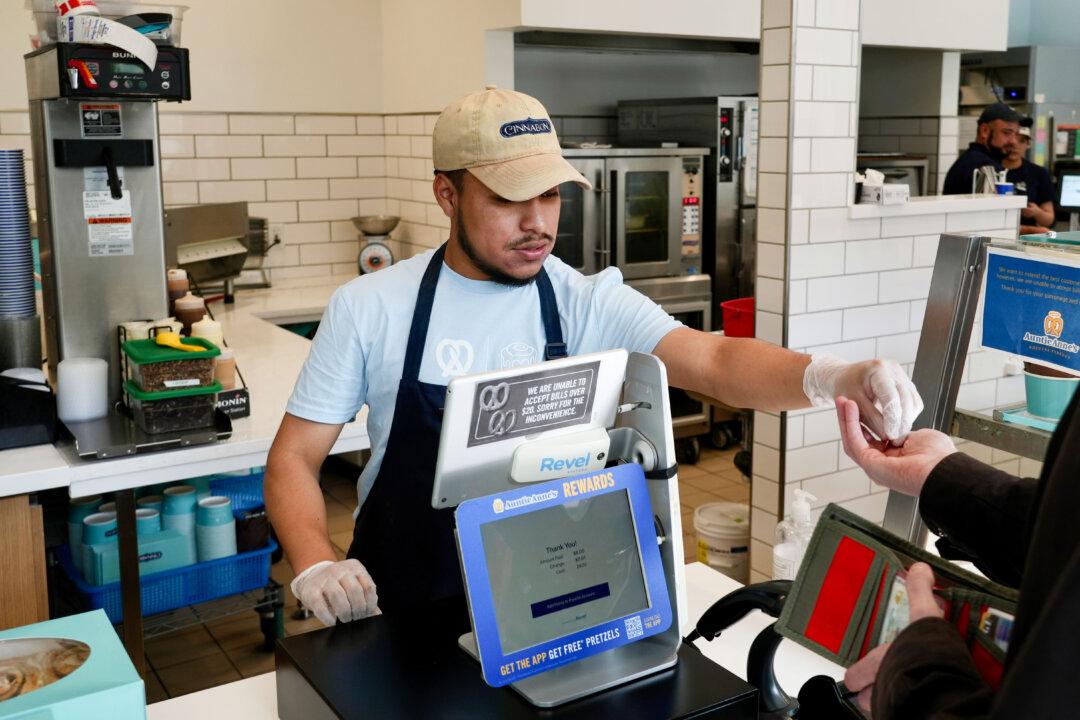With many questions surrounding the predicted U.S. economic performance in 2024, ranging from a soft landing to an all-out recession, some consumers don’t appear to be adjusting their spending habits.
According to a study late last year from Qualtrics on behalf of Intuit Credit Karma, the phenomenon known as “doom spending,” whereby consumers spend money with little reflection on the economy, has been afflicting predominantly younger generations—such as Generation Z (35 percent, ages 12–27) and millennials (43 percent, ages 28–43)—at the same time most are worried about the future of the U.S. economy (64 percent).
A recent survey from digital personal finance company Achieve also found that half of American consumers expected to take on debt to pay for the holidays last year, proven by an increase of 3.1 percent in spending from November through Christmas Eve, according to Mastercard SpendingPulse.
With an estimated two months on average to pay off that Christmas debt, here comes Valentine’s Day, when doom spending has the potential to reignite. According to a Trustpilot study, younger Americans are feeling pressured to spend on their loved ones. The study found that 33 percent of millennials and 21 percent of Gen Zs (or 27 percent overall) in relationships will buy more this year than last.
According to the National Retail Federation (NRF), consumers plan to spend $25.8 billion to celebrate Valentine’s Day this year, the third-highest amount in the survey’s history. The NRF also estimates that consumers will spend an average of $185.81 each, representing an increase of $8 compared to the last five years.
“Until they really see the consequences that put them in a position where they really can’t do anything about it and have a really difficult time, their behavior won’t change. They have to see the low,” said University of Georgia professor Kristy Archuleta, who teaches a financial planning program and is a financial behavior researcher.
“It’s being driven by fear and anxiety. They don’t know what to do with the economy and spending becomes a coping mechanism. It’s not new but there’s now a new term [doom spending] associated with it,” she told The Epoch Times.
Luxury trips, designer clothes, and Taylor Swift concert tickets have become commonplace doom spending habits by those who have been frustrated by being unable to get out of their parent’s homes and start their adult lives and part of what’s driving the anxiety in younger consumers is the housing market.
Once a main factor in moving into adulthood, little housing inventory, high-interest rates, inflated home prices, and the need for sizable down payments have caused many young consumers to give up on that “American dream.”
“It’s hard for someone younger to try and break into home ownership. This is a two-pronged sword of not only having little saved up for a down payment but taking what you did save and blowing it. They’re thinking, why hang on to it?” Dr. Mary Bell Carlson, a financial behavior expert and president and founder of the Financial Behavior Keynote Group, said to The Epoch Times. “It doesn’t take much of a market change to be underwater compared to the days when we had 0% interest.”
NRF chief economist Jack Kleinhenz, in a press statement from the organization, said current spending habits driven by frustration over the U.S. economy must come to an end eventually.
“A year ago, many commentators were skeptical and calling for a recession, but the recession never came. With each passing month, consumers kept spending despite inflation and higher borrowing costs. Nonetheless, those tailwinds are not necessarily sustainable,” Mr. Kleinhenz said. “Tighter credit conditions along with higher borrowing costs continue to be in place now that we’ve turned the page on the annual calendar, and employment reports confirm that the labor market expansion is slowing.”
Ms. Archuleta also believes that there’s a case to be made that parents are enabling their children and giving them opportunities to spend without consequences.
“This is an unpopular opinion, but there’s a degree to how much adult children rely on their parents because they know they’re going to take care of them without any and there aren’t any consequences,” she said.
“It’s a type of financial enmeshment where emotions take over traditional thinking when you’re with another family member and think “I’ll just live with Mom and Dad until things get better.”
That contributes to doomsday spending when you’re not having to worry about saving money.”
But another factor may also be in play here: spending money over personal communication, according to Ms. Carlson, who used Valentine’s Day as an example.
“We buy gifts to show our love versus time and attention. When was the last time you put down your phone and had a conversation? It’s quicker, easier, and faster to buy something, give it to them, say I love you, and then move on to the next project.”





